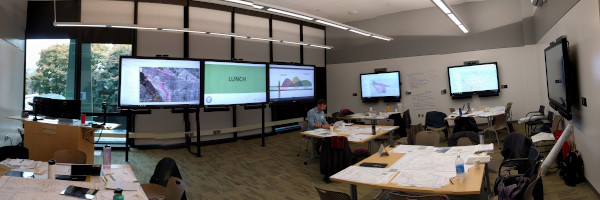Data: Difference between revisions
No edit summary |
No edit summary |
||
| Line 1: | Line 1: | ||
{{ | {{Chapter | ||
| | | blueprint = Data | ||
| | | sectors = Data | ||
| | | authors = Scott Tousley, Jason Whittet, Wilfred Pinfold | ||
| poc = Scott Tousley | |||
| | | email = tousleys@gmail.com | ||
| document = 20170824-City-Platform-Supercluster-Report-FINAL.pdf | |||
| chapter = 300 | |||
| image = DataChapter.jpg | |||
| summary = In 2016, the United Nations reported that an estimated 54.5% of the world’s population lived in urban settlements. By 2030, urban areas are projected to swell to 60% and one in every three people will live in a city. With more than three million people moving into urban areas each week, cities are faced with an unprecedented challenge. | |||
}} | |||
How do you deliver essential services to your citizens in the face of already stressed aging infrastructure, shrinking budgets and a myriad of challenges that create complexity never envisioned by any civil engineer prior to the 21st century based on this mass influx of people? The pace of change is daunting and cities who do not act to address this seismic migration surge will likely face dire consequences. | |||
The | The smart city concept, based on internet of things (IoT) technologies wirelessly connecting infrastructure using sensors, beacons and other devices that produces substantial amounts of data, was developed to help cities gain better manage their assets. The concept of building a “smart city” can be traced back to various movements and research papers published in the late 20th century. One of the most notable early research pieces from the Los Angeles Community Analysis Bureau, “The State of the City: A Cluster Analysis of Los Angeles (1974)”, “sought new tools to address the old challenges of deteriorating housing by providing detailed local data to identify neighborhoods showing early signs of obsolescence.” Data was identified as one of the keys to gaining a better understanding to an urbanization problem, and that axiom holds true more than ever in 2017. | ||
Modern daily life and the problems associated with it, defined by data, allows deeper insight and decision-making capabilities that both city officials need, and the innovation community requires, to create better solutions to deal with the urban challenges of densification. Quality data is essential, however, making the data accessible and understandable is critical to making the data ultimately valuable. | |||
How do cities deal with the enormous amounts of data that smart cities produce? Once collected, how do city officials interface with this data to extract the right information to make effective operational and strategic decisions? How are these decisions made in a time efficient manner without sacrificing insight, relevance or the ability to synthesize multiple disparate data sources to make a single yet complex decision based on multiple real-time inputs? | |||
The National Institute of Standards and Technology (NIST), in support of the smart city space, created the Global City Teams Challenge (GCTC) to help cities create a more unified multi-city, multi-stakeholder conversation to deal with the complex issues associated with operating a city with the daunting urbanization challenges. The role that smart city technology can play across diverse sectors (transportation, energy, manufacturing, healthcare, etc.) can enable cities to improve services, promote economic growth and enhance the quality of life for citizens around the world. GCTC was designed to encourage collaboration among cities and help in the development of standards. | |||
“GCTC’s long-term goal is "to establish and demonstrate replicable, scalable, and sustainable models for incubation and deployment of interoperable, standard-based solutions using advanced technologies such as IoT and CPS, and demonstrate their measurable benefits in communities and cities." “The GCTC program is a collaborative platform for the development of smart cities and communities. It enables local governments, nonprofit organizations, academic institutions, technologists, and private corporations from all over the world to form project teams, or “action clusters,” and “SuperClusters,” to work on groundbreaking Internet of Things (IoT) applications within the smart city and community environment.” | |||
“NIST, along with its partners, acts as a “matchmaker”—facilitating, advising, encouraging, nurturing, and publicizing the action clusters and their projects. Since the program launched in September 2014, GCTC has recruited and incubated over 160 action clusters with participation from over 150 cities and 400 companies/organizations from around the world.” | |||
=Global City Teams Challenge Supercluster Workshop on City Platform= | |||
On February 7-8, 2017, The City of Kansas City, Missouri, KC Digital Drive and Think Big Partners held the “NIST / KCMO Supercluster Platform Workshop” that attracted over 120 participants from around the world. During this two day event, participants came with a list of problems and questions associated with smart city data and the city platform that was needed to manage it. Additionally, inter and intra-departmental data management issues were also discussed to develop cross-sector understanding of the data platform required to make inter-departmental decisions in a near real-time, macro-city management basis. | |||
The following report was compiled with these objectives in mind: | |||
#Archive the discussions held by participants during the event; | |||
#Capture the various data elements that were identified as valuable in the management, operations and strategic planning for city officials in the realm of smart city data relative to their major problems; | |||
#Assess some of the city platform functional requirements as identified by the participants based on proposed basic strategies to solve their problems; | |||
#Help define how cities will assess data; | |||
#Present ideas on how cities will fund, construct and sustain smart city systems over time; | |||
#Enhance some of the insights gained during the event with supplemental primary and secondary research; and | |||
#Provide additional insights for city data platform and beyond | |||
Revision as of 21:52, January 19, 2023
| Data | |
|---|---|

| |
| Sectors | Data |
| Contact | Scott Tousley |
| Topics | |
- Authors
In 2016, the United Nations reported that an estimated 54.5% of the world’s population lived in urban settlements. By 2030, urban areas are projected to swell to 60% and one in every three people will live in a city. With more than three million people moving into urban areas each week, cities are faced with an unprecedented challenge.
How do you deliver essential services to your citizens in the face of already stressed aging infrastructure, shrinking budgets and a myriad of challenges that create complexity never envisioned by any civil engineer prior to the 21st century based on this mass influx of people? The pace of change is daunting and cities who do not act to address this seismic migration surge will likely face dire consequences.
The smart city concept, based on internet of things (IoT) technologies wirelessly connecting infrastructure using sensors, beacons and other devices that produces substantial amounts of data, was developed to help cities gain better manage their assets. The concept of building a “smart city” can be traced back to various movements and research papers published in the late 20th century. One of the most notable early research pieces from the Los Angeles Community Analysis Bureau, “The State of the City: A Cluster Analysis of Los Angeles (1974)”, “sought new tools to address the old challenges of deteriorating housing by providing detailed local data to identify neighborhoods showing early signs of obsolescence.” Data was identified as one of the keys to gaining a better understanding to an urbanization problem, and that axiom holds true more than ever in 2017.
Modern daily life and the problems associated with it, defined by data, allows deeper insight and decision-making capabilities that both city officials need, and the innovation community requires, to create better solutions to deal with the urban challenges of densification. Quality data is essential, however, making the data accessible and understandable is critical to making the data ultimately valuable.
How do cities deal with the enormous amounts of data that smart cities produce? Once collected, how do city officials interface with this data to extract the right information to make effective operational and strategic decisions? How are these decisions made in a time efficient manner without sacrificing insight, relevance or the ability to synthesize multiple disparate data sources to make a single yet complex decision based on multiple real-time inputs?
The National Institute of Standards and Technology (NIST), in support of the smart city space, created the Global City Teams Challenge (GCTC) to help cities create a more unified multi-city, multi-stakeholder conversation to deal with the complex issues associated with operating a city with the daunting urbanization challenges. The role that smart city technology can play across diverse sectors (transportation, energy, manufacturing, healthcare, etc.) can enable cities to improve services, promote economic growth and enhance the quality of life for citizens around the world. GCTC was designed to encourage collaboration among cities and help in the development of standards.
“GCTC’s long-term goal is "to establish and demonstrate replicable, scalable, and sustainable models for incubation and deployment of interoperable, standard-based solutions using advanced technologies such as IoT and CPS, and demonstrate their measurable benefits in communities and cities." “The GCTC program is a collaborative platform for the development of smart cities and communities. It enables local governments, nonprofit organizations, academic institutions, technologists, and private corporations from all over the world to form project teams, or “action clusters,” and “SuperClusters,” to work on groundbreaking Internet of Things (IoT) applications within the smart city and community environment.”
“NIST, along with its partners, acts as a “matchmaker”—facilitating, advising, encouraging, nurturing, and publicizing the action clusters and their projects. Since the program launched in September 2014, GCTC has recruited and incubated over 160 action clusters with participation from over 150 cities and 400 companies/organizations from around the world.”
Global City Teams Challenge Supercluster Workshop on City Platform
On February 7-8, 2017, The City of Kansas City, Missouri, KC Digital Drive and Think Big Partners held the “NIST / KCMO Supercluster Platform Workshop” that attracted over 120 participants from around the world. During this two day event, participants came with a list of problems and questions associated with smart city data and the city platform that was needed to manage it. Additionally, inter and intra-departmental data management issues were also discussed to develop cross-sector understanding of the data platform required to make inter-departmental decisions in a near real-time, macro-city management basis. The following report was compiled with these objectives in mind:
- Archive the discussions held by participants during the event;
- Capture the various data elements that were identified as valuable in the management, operations and strategic planning for city officials in the realm of smart city data relative to their major problems;
- Assess some of the city platform functional requirements as identified by the participants based on proposed basic strategies to solve their problems;
- Help define how cities will assess data;
- Present ideas on how cities will fund, construct and sustain smart city systems over time;
- Enhance some of the insights gained during the event with supplemental primary and secondary research; and
- Provide additional insights for city data platform and beyond


